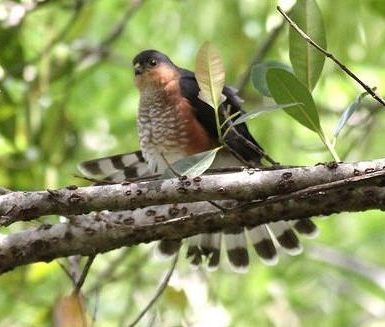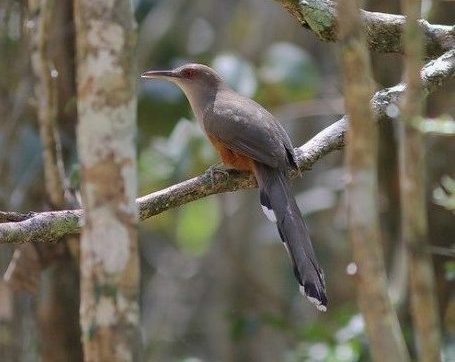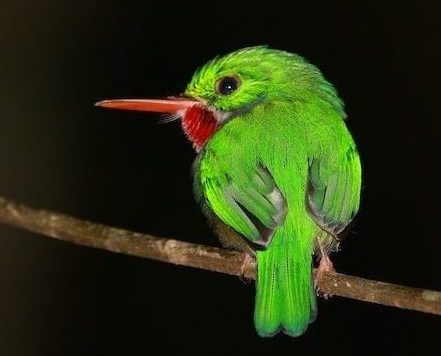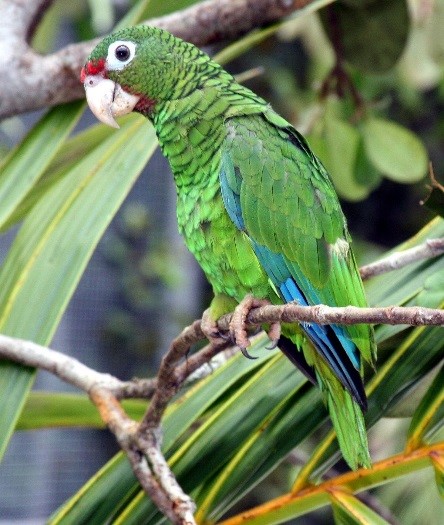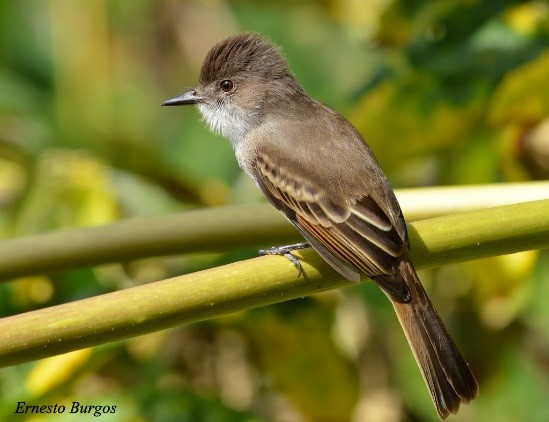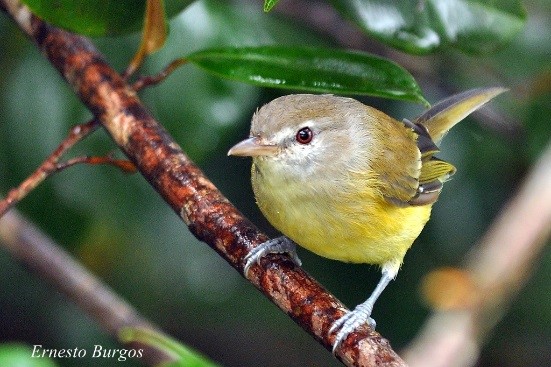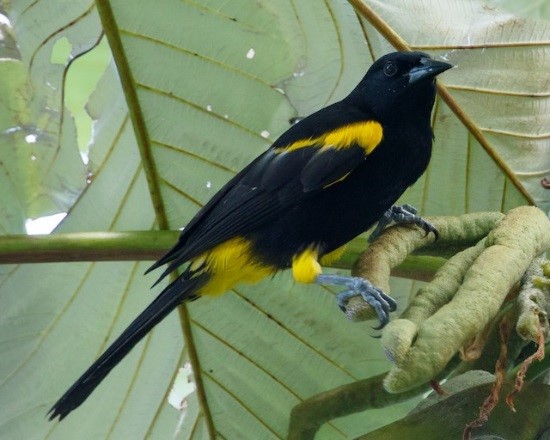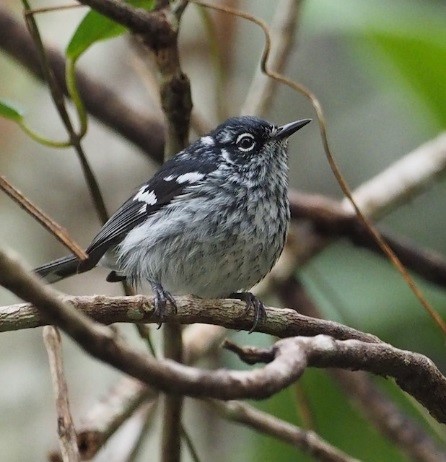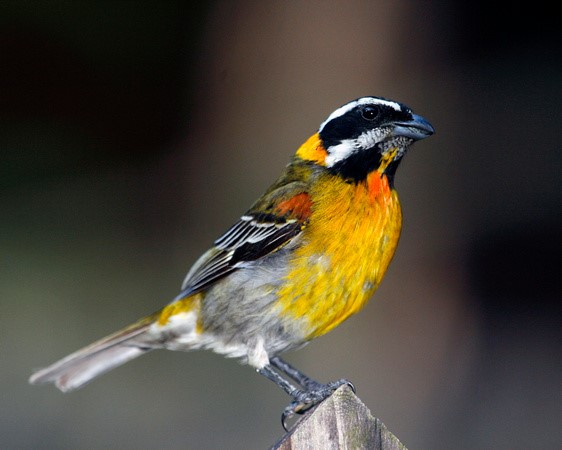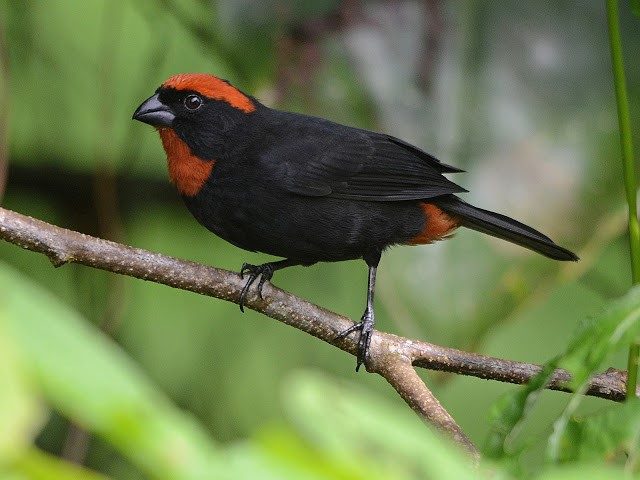Puerto Rico has approximately 20 endemic bird species (including a few that also occur on Mona, Culebra, Vieques or the Virgin Islands—and thus are endemic to the “Puerto Rican archipelago”). About half of these can be found during a half-day excursion from San Juan, but several of the others are rare or localized and require a special effort to track down. Puerto Rico also has a large contingent of introduced species, including several that became established during the colonial period, an avian legacy of the slave trade.
Endemic Birds
“Puerto Rican Sharp-shinned Hawk” / “Puerto Rican Broad-winged Hawk” / Puerto Rican Lizard-Cuckoo / Puerto Rican Owl / Puerto Rican Nightjar / Puerto Rican Mango / Green Mango / Puerto Rican Emerald / Puerto Rican Tody / Puerto Rican Woodpecker / Puerto Rican Parrot / Puerto Rican Pewee / Puerto Rican Flycatcher / Puerto Rican Kingbird / Puerto Rican Vireo / Puerto Rican Euphonia / Puerto Rican Oriole / Yellow-shouldered Blackbird / Elfin Woods Warbler / Adelaide’s Warbler / Puerto Rican Spindalis / Puerto Rican Tanager / Puerto Rican Bullfinch
It is possible to find all of the endemics by visiting four sites in western Puerto Rico, each with localized rarities not found at the others: Río Abajo State Forest for Puerto Rican Parrot and “Puerto Rican Broad-winged Hawk”; Maricao State Forest for “Puerto Rican Sharp-shinned Hawk,” Elfin Woods Warbler, and Puerto Rican Tanager; Guánica State Forest for Puerto Rican Nightjar; and either La Parguera or Cabo Rojo National Wildlife Refuge for Yellow-shouldered Blackbird. (For general orientation to Puerto Rico’s main birdwatching sites, see Key to Locations, below.)
“Puerto Rican Sharp-shinned Hawk” (Accipiter striatus venator): Critically endangered endemic form of Sharp-shinned Hawk. Likely merits recognition as a separate species, but may become extinct before earning that distinction. Maricao State Forest is the only publicly known site where it has been observed consistently in recent years. Within Maricao, the best place to look for it is the headquarters access road, which has hosted a resident pair for many years.
“Puerto Rican Broad-winged Hawk” (Buteo platypterus brunnescens): Endangered endemic form of Broad-winged Hawk. It remains locally common in Río Abajo State Forest and the surrounding haystack hills. In recent years, it has been seen occasionally at El Yunque National Forest, but its status there after Hurricane María is unclear.
Puerto Rican Lizard-Cuckoo (Coccyzus vieilloti): Fairly common in all types of forests throughout Puerto Rico, but it is often inconspicuous and some visiting birdwatchers find it elusive. Cambalache State Forest is probably the most reliable site, but it is also numerous at Guánica and Maricao State Forests and El Yunque National Forest. Within San Juan, it has been found at Julio Enrique Monagas National Park, but may not be a permanent resident there.
Puerto Rican Owl (Gymnasio nudipes): Fairly common in both wet and dry forests throughout Puerto Rico, including Julio Enrique Monagas National Park in San Juan. Sites that have been consistently reliable over the years include El Yunque National Forest (e.g., the parking lot at La Coca Falls), Río Abajo and Guánica State Forests, and the Arecibo Observatory parking lot.
Puerto Rican Nightjar (Antrostomus noctitherus): Locally common in dry forest and scrub in the southwestern lowlands of Puerto Rico. Guánica State Forest houses about half of the world population and is the most accessible reliable site. Can sometimes be found in the town of Guánica itself and farther west in the hills above the beach towns of Playa Santa and La Parguera.
Puerto Rican Mango (Anthracothorax aurulentus): Common and easy to find across most of Puerto Rico. Most reliably found in the southwest at Guánica State Forest, Cabo Rojo National Wildlife Refuge, and La Parguera. Can be found in the gardens of many seaside resorts and in urban areas, including San Juan. Traditionally regarded as conspecific with Hispaniolan Mango, but the two forms differ in plumage and morphology and are increasingly recognized as separate species.
Green Mango (Antrostomus viridis): Common in humid woodlands of the western hill country and mountains, especially at higher elevations; uncommon in the east. Easy to find at Maricao State Forest and generally in the interior of western Puerto Rico. In the east, near San Juan, Coca Falls in El Yunque National Forest has traditionally been the best place to look for it.
Puerto Rican Emerald (Chlorostilbon maugaeus): Locally common in wet and dry forests at all elevations; uncommon in other types of woodland and gardens. Occurs throughout the island, but much more numerous in the western half. Easy to find at humid forest sites such as El Yunque National Forest and Río Abajo and Maricao State Forests, and along the southwestern coast at Guánica State Forest, Cabo Rojo National Wildlife Refuge, and La Parguera.
Puerto Rican Tody (Todus mexicanus): Common in a wide array of native woodland habitats throughout Puerto Rico, from the dry thickets of the southwestern lowlands to montane rain forests. Can be found on most visits to sites with tracts of native forest, such as Cambalache, Río Abajo, Maricao, and Guánica State Forests, and El Yunque National Forest.
Puerto Rican Woodpecker (Melanerpes portoricensis): Common and easy to find in all wooded habitats throughout Puerto Rico; uncommon on Vieques. Within San Juan, Julio Enrique Monaga National Park is a reliable site.
Puerto Rican Parrot (Amazona vittata): Critically endangered and mostly confined to two protected tracts of rain forest, El Yunque National Forest and Río Abajo State Forest, both of which have captive breeding facilities that have saved the species from certain extinction. Río Abajo is by far the best place to look for it, especially after Hurricane María’s general destruction of El Yunque. At Río Abajo, members of the wild-living population can usually be found in the vicinity of the captive breeding facility.
Puerto Rican Pewee (Contopus blancoi): Common in wet and dry forests at all elevations in the western half of Puerto Rico. Inexplicably rare and sporadic in the eastern half. Most numerous in the southwest, especially at Maricao State Forest and Boquerón and Cabo Rojo National Wildlife Refuges. Can also be found on most visits to Guánica, Susúa, and Río Abajo State Forests. Traditionally classified as a subspecies of the Lesser Antillean Pewee, but differences in appearance and voice suggest that recognition as a separate species is appropriate.
Puerto Rican Flycatcher (Myiarchus antillarum): Generally common and easy to find throughout Puerto Rico and on Vieques. Also occurs in the Virgin Islands, mainly on St. John. Especially numerous at lowland forest sites such as Cabo Rojo National Wildlife Refuge and Guánica and Cambalache State Forests. Fairly common in patches of natural habitat within San Juan.
Puerto Rican Kingbird (Tyrannus taylori): Occurs at all of the well visited sites on Puerto Rico, but not common everywhere. Sites where it can be found consistently include El Yunque National Forest, Maricao State Forest (especially the old stone house near the headquarters), Cabo Rojo National Wildlife Refuge, and the west end of Vieques. Traditionally regarded as a subspecies of Loggerhead Kingbird, but differences in voice and plumage suggest that it is a separate species.
Puerto Rican Vireo (Vireo latimeri): Common and easy to find in the western state forests: Guánica, Maricao, Río Abajo, Guajataca, and Cambalache. In the San Juan area, Piñones State Forest seems to be the most reliable site. Can sometimes be found at El Yunque National Forest, but not common there.
Puerto Rican Euphonia (Euphonia sclateri): Uncommon and local following Hurricane María, which caused a significant decline in its abundance and distribution. Occurs in both wet and dry forests. Sites where it has been seen often over the years inlude El Yunque National Forest and Río Abajo, Maricao, and Guánica State Forests.
Puerto Rican Oriole (Icterus portoricensis): Fairly common throughout Puerto Rico, mostly in woodland edge habitats with tall trees. Reliable sites near San Juan include Cambalache State Forest and lower elevations of El Yunque National Forest. Within San Juan, Julio Enrique Monagas National Park is a likely place to look for it.
Yellow-shouldered Blackbird (Agelaius xanthomus): A locally common Puerto Rican endemic that is most conveniently found in the town of La Parguera, particularly around the Parador Villa Parguera. Also found reliably at Boquerón and Cabo Rojo National Wildlife Refuges. Gradually becoming more widespread as it recolonizes areas that it formerly occupied.
Elfin Woods Warbler (Setophaga angelae): An extremely localized endemic that is reliably found only at Maricao State Forest—especially around the headquarters and Camino Descanso. At El Yunque National Forest, the most accessible area where it has traditionally been found regularly is the Mount Britton Trail, but Hurricane María devastated that area, cutting off public access indefinitely, and its status there is unclear.
Adelaide’s Warbler (Setophaga adelaidae): Locally abundant at lowland forest sites such as Guánica and Cambalache State Forests, and Cabo Rojo National Wildlife Refuge, and on Vieques. Also occurs at most other heavily visited sites on Puerto Rico, but uncommon in wet montane forests. In San Juan, Julio Enrique Monaga National Park is a reliable location.
Puerto Rican Spindalis (Spindalis portoricensis): Common and easy to find in woodlands across most of Puerto Rico. Most numerous in mountains and foothills, as at Maricao and Río Abajo State Forests and El Yunque National Forest. Within San Juan, Julio Enrique Monagas National Park is a likely place for it.
Puerto Rican Tanager (Nesospingus speculiferus): Locally common in wet montane forests of the Cordillera Central and Sierra de Luquillo. Most readily found at Maricao State Forest. Can also be found at upper elevations of El Yunque National Forest and in Carite, Monte Guilarte, and Toro Negro State Forests.
Puerto Rican Bullfinch (Melopyrrha portoricensis): Easy to find, but not always easy to see, at the main forest sites: e.g., El Yunque National Forest and Cambalache, Guánica, Maricao, and Río Abajo State Forests. Usually detected by its loud, cardinal-like song, which it often belts out from an inconspicuous perch. Within San Juan, Julio Enrique Monaga National Park is probably the best place to search for it.
Puerto Rico – Orientation Map

1 – Barceloneta
2 – Boquerón Wildlife Refuge
3 – Cabezas de San Juan Nature Reserve
4 – Cabo Rojo National Wildlife Refuge
6 – Caño Tiburones Nature Reserve
7 – Camuy
8 – Comerío
9 – Culebra National Wildlife Refuge
10 – El Yunque National Forest
11 – Guajataca State Forest
12 – Guánica State Forest
13 – Hacienda La Esperanza
14 – Humacao Nature Reserve
15 – Julio Enrique Monaga National Park
16 – La Parguera
18 – Maricao State Forest
19 – Old San Juan
20 – Piñones State Forest
21 – Quebradillas
22 – Rincón
24 – Susúa State Forest
25 – Vieques National Wildlife Refuge
